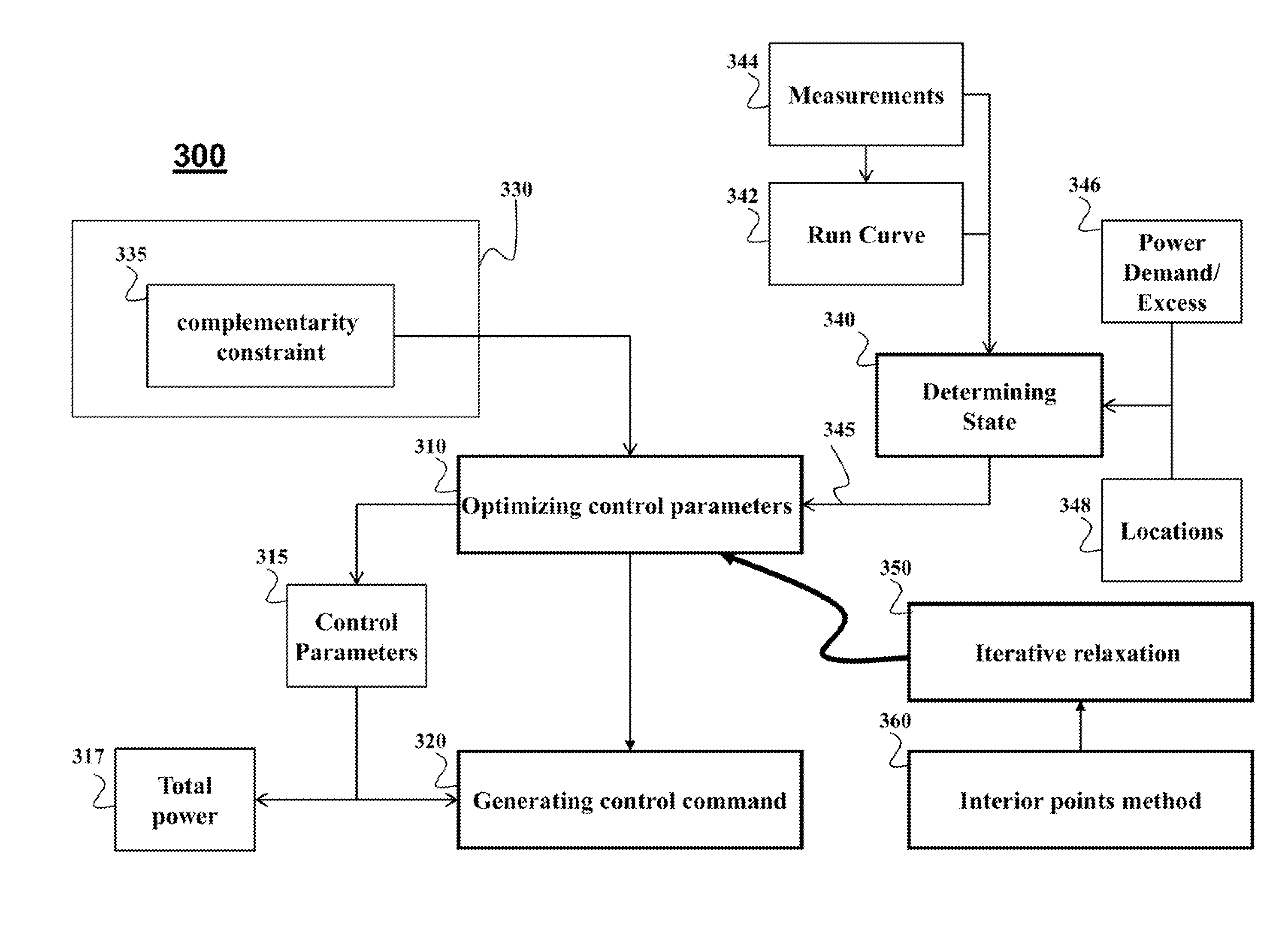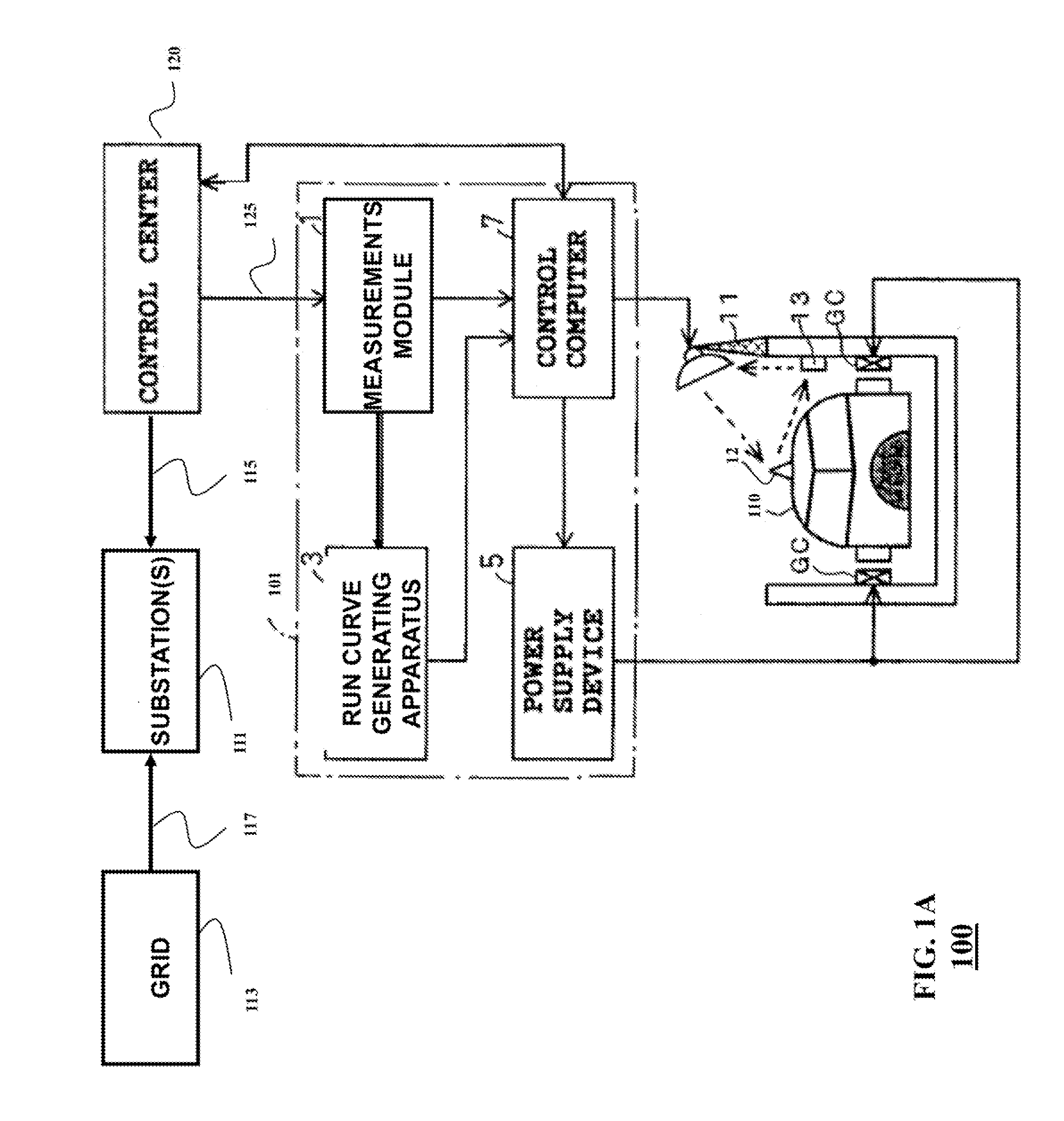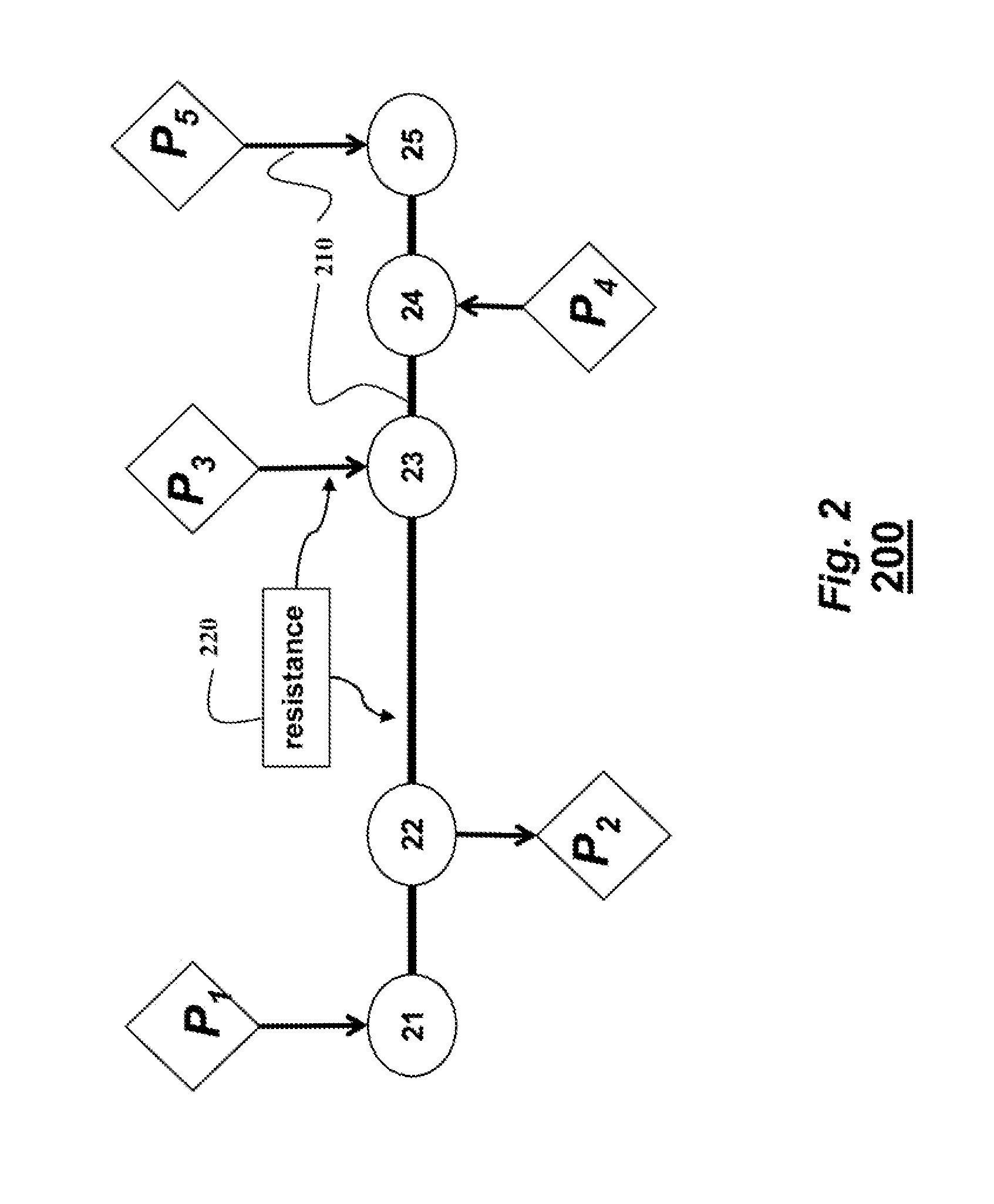System and method for optimizing energy consumption in railway systems
a technology of energy consumption and optimization method, applied in the field of railway systems, can solve the problems of affecting the efficiency of the optimization method, affecting the optimization effect of the optimization parameter controlling at least part of the energy consumption, and potential damage to the power supply system, so as to improve the energy efficiency of the train individually, reduce the total energy consumption, and optimize the total energy consumption of the railway system.
- Summary
- Abstract
- Description
- Claims
- Application Information
AI Technical Summary
Benefits of technology
Problems solved by technology
Method used
Image
Examples
Embodiment Construction
[0031]Railway System
[0032]The embodiments of the invention optimize an energy consumption of a railway system that includes a set of trains and a set of substations. The substations are connected to a grid and provide power to the set of trains. Optimizing energy consumption includes minimizing the amount of power supplied to the railway system from the grid. The embodiments can reflect, in real-time, dynamically varying, states of the railway system, in terms of locations and identifications of substation and trains, and measured electrical characteristics such voltages, currents, and resistances in power lines of DC network connecting the substations and trains.
[0033]FIG. 1 show a railway system 100 according to some embodiments of the invention. The railway system 100 includes a set of trains, such as a train 110 and a set of substations 111. The train 110 can be an electrical train, wherein the electric power is converted and supplied to feeders or ground coils (GC) via breakers...
PUM
 Login to View More
Login to View More Abstract
Description
Claims
Application Information
 Login to View More
Login to View More - R&D
- Intellectual Property
- Life Sciences
- Materials
- Tech Scout
- Unparalleled Data Quality
- Higher Quality Content
- 60% Fewer Hallucinations
Browse by: Latest US Patents, China's latest patents, Technical Efficacy Thesaurus, Application Domain, Technology Topic, Popular Technical Reports.
© 2025 PatSnap. All rights reserved.Legal|Privacy policy|Modern Slavery Act Transparency Statement|Sitemap|About US| Contact US: help@patsnap.com



